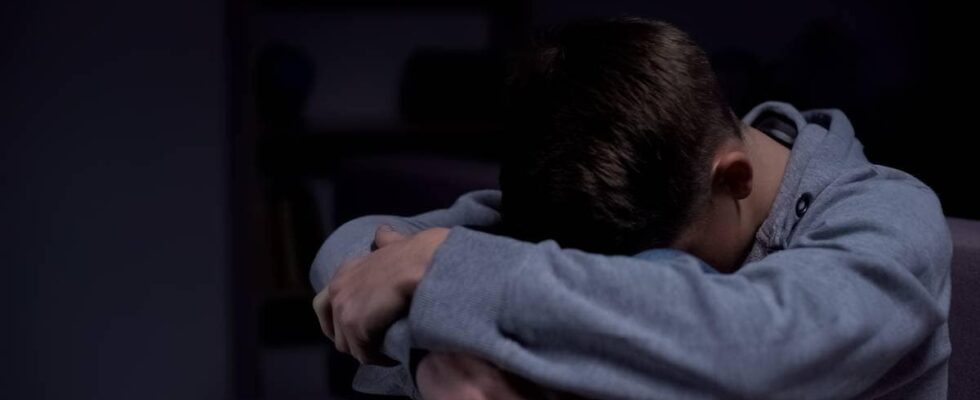693 people took their own lives last year. That is 70 more than the previous year. – It doesn’t help much how many bridges and dangerous places you secure. That’s what Victoria Bakken, PhD student at NTNU, says. For the past three years, she has been researching how we can best prevent suicide. What can stop people from taking their own lives turns out to be largely different for boys and girls. What helps? – We all need to feel that we belong somewhere. Medicine against loneliness is to be part of something, says Bakken. Belonging applies to a particular extent as a measure against suicide among boys and men. In 2023, 71 percent of those who committed suicide were men. Victoria Bakken is a PhD student at NTNU. She has been researching suicide for three years. Photo: Frode Fossvold-Jørum, NTNU Bakken has analyzed data from almost 2,500 Norwegian young people. These have been followed for 26 years. She has also interviewed fifteen of the young people in depth, now as adults. In the interviews, she has received answers to what really helped when they struggled with suicidal thoughts in their youth. The study shows that there are clear gender differences. Seeking help earlier For girls with suicidal thoughts or for those who have attempted suicide, a secure attachment to parents and family provides particularly good protection against suicide, explains the researcher. – The girls find it much easier to seek help early. They turn to family and talk to siblings or parents. While for the boys this is more difficult. Both seeking help from those closest to you, but also from professionals. This is what a 24-year-old woman with several suicide attempts says: – I am very happy that I have not become part of the suicide statistics. For my part, it was good, observant adults around who helped the most. That there was someone available who I could talk to and who would listen. Must think differently with boys The study shows that prevention must have a different approach. Especially among boys and men. – Many boys state that they do not want to be a nuisance or worry their loved ones. This prevents them from talking to anyone about it, says Bakken. Among boys and men, access to activities is an important preventive measure. – Being part of leisure activities or having a hobby with others is the best medicine to prevent suicide among boys and men. A better activity offer for young people could be an effective means of action. The figure shows changes over time in suicide. The illustration on the left shows the mortality rate for the period 1973-2023, while the illustration on the right shows the number of deaths from this cause in the period 1953-2023. Change of environment The study also shows that a change of environment can be particularly important for those who struggle with heavy thoughts. – It helps to get away from a bad environment. It can also mean changing schools, says Bakken. Adolescence was like a black hole, several of the sources report. But that a change in environment made them see a brighter future and life. Failed zero vision Despite the government’s zero vision, suicide numbers have not been higher since 1988. Perhaps a different approach to the problem could be a solution. – It is a problem that the numbers are not going down. While most people who research suicide start from risk factors and danger signals, this study starts from what actually helps and protects those who have experienced suicidal thoughts or attempted suicide. Bakken also believes it is important to broaden the understanding of which thoughts and feelings are normal to feel. – During periods of life, it is normal to have existential thoughts about life and death. It does not necessarily mean that one is mentally ill. It is normal to feel both stress and heavy thoughts. It does not have to mean that one has anxiety or is depressed. We need to broaden our understanding of what thoughts and feelings are considered normal. Young people must be given the opportunity to learn about this somewhere, says Bakken. Here you can get help if you are struggling: NOTE: If it says about life and health, call 113! Helpline for Mental Health: 116 123 (from abroad: +47 911 16 123) 24-hour chat service and writing service: sidetmedord.no Mental Health Youth Help Chat is for youth and young adults, aged 18-35. Open every day all week from 18 to 21. Alarm phone for children and young people: An emergency number for children and young people: 116 111 Red Cross’ Cross on the neck: A chat for everyone under 18 – open daily 14-22 Cross on the neck telephone: 800 33 321 (Mon-Fri 14-22) Church SOS, telephone 22 40 00 40 (24/7) Church SOS, anonymous chat: soschat.no (daily 18.30-22.30 – Fri to 01.30) You can find several different helplines and chats at psyksikhelse.no Source: The Council for mental health Published 17.08.2024, at 20.35 Updated 17.08.2024, at 20.52
ttn-69
Research shows that there are large gender differences in how to prevent suicide – news Trøndelag – Local news, TV and radio

